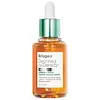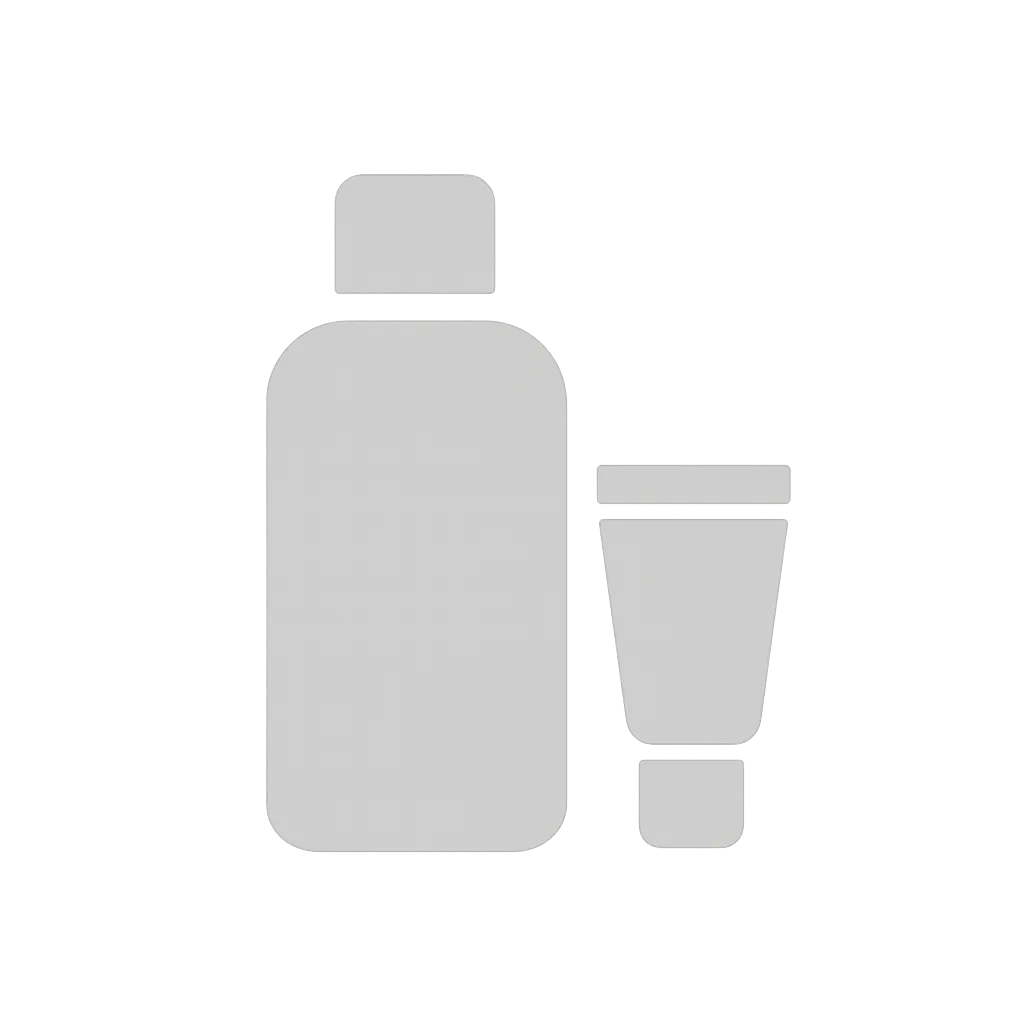What's inside
What's inside
 Key Ingredients
Key Ingredients

No key ingredients
 Benefits
Benefits

 Concerns
Concerns

 Ingredients Side-by-side
Ingredients Side-by-side

Water
Skin ConditioningHydrolyzed Corn Starch
HumectantPropanediol
SolventDimethicone PEG-8 Meadowfoamate
EmollientAloe Barbadensis Leaf Juice
Skin ConditioningEmblica Officinalis Fruit Extract
Skin ConditioningHydrolyzed Soy Protein
HumectantHydrolyzed Wheat Protein
Skin ConditioningHydrolyzed Wheat Starch
Skin ConditioningPEG-40 Hydrogenated Castor Oil
EmulsifyingDihydroxypropyl Arginine Hcl
HumectantStearamidopropyl Dimethylamine
EmulsifyingCetearyl Alcohol
EmollientHydrogenated Lecithin
EmulsifyingDimethiconol
EmollientCoco-Glucoside
CleansingPolyquaternium-4
Polyquaternium-10
Dimethicone
EmollientAcacia Senegal Gum
MaskingLithium Magnesium Sodium Silicate
AbsorbentMaltodextrin
AbsorbentCitric Acid
BufferingParfum
MaskingLinalool
PerfumingCitronellol
PerfumingLimonene
PerfumingCitral
PerfumingEugenol
PerfumingGeraniol
PerfumingBenzyl Benzoate
AntimicrobialFarnesol
PerfumingBenzyl Salicylate
PerfumingSodium Gluconate
Skin ConditioningPotassium Sorbate
PreservativePhenoxyethanol
PreservativeWater, Hydrolyzed Corn Starch, Propanediol, Dimethicone PEG-8 Meadowfoamate, Aloe Barbadensis Leaf Juice, Emblica Officinalis Fruit Extract, Hydrolyzed Soy Protein, Hydrolyzed Wheat Protein, Hydrolyzed Wheat Starch, PEG-40 Hydrogenated Castor Oil, Dihydroxypropyl Arginine Hcl, Stearamidopropyl Dimethylamine, Cetearyl Alcohol, Hydrogenated Lecithin, Dimethiconol, Coco-Glucoside, Polyquaternium-4, Polyquaternium-10, Dimethicone, Acacia Senegal Gum, Lithium Magnesium Sodium Silicate, Maltodextrin, Citric Acid, Parfum, Linalool, Citronellol, Limonene, Citral, Eugenol, Geraniol, Benzyl Benzoate, Farnesol, Benzyl Salicylate, Sodium Gluconate, Potassium Sorbate, Phenoxyethanol
Water
Skin ConditioningPropanediol
SolventGlycerin
HumectantPentylene Glycol
Skin ConditioningBetaine
HumectantCoco-Caprylate/Caprate
EmollientCaffeine
Skin ConditioningCopper Tripeptide-34
Skin ConditioningNiacinamide
SmoothingCastor Oil/Ipdi Copolymer
Aloe Barbadensis Leaf Juice
Skin ConditioningCoffea Arabica Seed Oil
MaskingPanax Ginseng Root Extract
EmollientBiotin
AntiseborrhoeicCaprylic/Capric Triglyceride
MaskingLimnanthes Alba Seed Oil
Skin ConditioningCarbomer
Emulsion StabilisingLindera Strychnifolia Root Extract
Skin ConditioningHippophae Rhamnoides Oil
EmollientTrisodium Ethylenediamine Disuccinate
Acacia Senegal Gum
MaskingXanthan Gum
EmulsifyingPhyllanthus Emblica Fruit Extract
HumectantTocopheryl Acetate
AntioxidantHelianthus Annuus Hybrid Oil
EmollientLamium Album Extract
AstringentPlantago Psyllium Seed Extract
Skin ConditioningPanthenol
Skin ConditioningC12-15 Alkyl Benzoate
AntimicrobialSodium Metabisulfite
AntioxidantLarix Europaea Wood Extract
HumectantGlycine
BufferingTocopherol
AntioxidantUbiquinone
AntioxidantZinc Chloride
AntimicrobialSimmondsia Chinensis Seed Oil
EmollientLithospermum Erythrorhizon Root Extract
Skin ConditioningCamellia Sinensis Leaf Extract
AntimicrobialCitric Acid
BufferingPotassium Sorbate
PreservativeSodium Benzoate
MaskingSodium Hydroxide
BufferingBenzyl Alcohol
PerfumingCaramel
Cosmetic ColorantWater, Propanediol, Glycerin, Pentylene Glycol, Betaine, Coco-Caprylate/Caprate, Caffeine, Copper Tripeptide-34, Niacinamide, Castor Oil/Ipdi Copolymer, Aloe Barbadensis Leaf Juice, Coffea Arabica Seed Oil, Panax Ginseng Root Extract, Biotin, Caprylic/Capric Triglyceride, Limnanthes Alba Seed Oil, Carbomer, Lindera Strychnifolia Root Extract, Hippophae Rhamnoides Oil, Trisodium Ethylenediamine Disuccinate, Acacia Senegal Gum, Xanthan Gum, Phyllanthus Emblica Fruit Extract, Tocopheryl Acetate, Helianthus Annuus Hybrid Oil, Lamium Album Extract, Plantago Psyllium Seed Extract, Panthenol, C12-15 Alkyl Benzoate, Sodium Metabisulfite, Larix Europaea Wood Extract, Glycine, Tocopherol, Ubiquinone, Zinc Chloride, Simmondsia Chinensis Seed Oil, Lithospermum Erythrorhizon Root Extract, Camellia Sinensis Leaf Extract, Citric Acid, Potassium Sorbate, Sodium Benzoate, Sodium Hydroxide, Benzyl Alcohol, Caramel
Ingredients Explained
These ingredients are found in both products.
Ingredients higher up in an ingredient list are typically present in a larger amount.
Acacia Senegal Gum has skin soothing, thickening, and formulation stabilizing properties. It comes from the Acacia tree that is native to sub-Saharan Africa.
Aloe Barbadensis Leaf Juice comes from leaves of the aloe plant. Aloe Barbadensis Leaf Juice is best known for helping to soothe sunburns. It is also anti-inflammatory, moisturizing, antiseptic, and can help heal wounds.
Aloe is packed with good stuff including Vitamins A, C, and E. These vitamins are antioxidants, which help fight free-radicals and the damage they may cause. Free-radicals are molecules that may damage your skin cells, such as pollution.
Aloe Barbadensis Leaf Juice also contains sugars. These sugars come in the form of monosaccharides and polysaccharides, folic acid, and choline. These sugars are able to help bind moisture to skin.
It also contains minerals such as calcium, 12 anthraquinones, fatty acids, amino acids, and Vitamin B12.
Learn more about Aloe Barbadensis Leaf JuiceCitric Acid is an alpha hydroxy acid (AHA) naturally found in citrus fruits like oranges, lemons, and limes.
Like other AHAs, citric acid can exfoliate skin by breaking down the bonds that hold dead skin cells together. This helps reveal smoother and brighter skin underneath.
However, this exfoliating effect only happens at high concentrations (20%) which can be hard to find in cosmetic products.
Due to this, citric acid is usually included in small amounts as a pH adjuster. This helps keep products slightly more acidic and compatible with skin's natural pH.
In skincare formulas, citric acid can:
While it can provide some skin benefits, research shows lactic acid and glycolic acid are generally more effective and less irritating exfoliants.
Most citric acid used in skincare today is made by fermenting sugars (usually from molasses). This synthetic version is identical to the natural citrus form but easier to stabilize and use in formulations.
Read more about some other popular AHA's here:
Learn more about Citric AcidPotassium Sorbate is a preservative used to prevent yeast and mold in products. It is commonly found in both cosmetic and food products.
This ingredient comes from potassium salt derived from sorbic acid. Sorbic acid is a natural antibiotic and effective against fungus.
Both potassium sorbate and sorbic acid can be found in baked goods, cheeses, dried meats, dried fruit, ice cream, pickles, wine, yogurt, and more.
You'll often find this ingredient used with other preservatives.
Learn more about Potassium SorbatePropanediol is an all-star ingredient. It softens, hydrates, and smooths the skin.
It’s often used to:
Propanediol is not likely to cause sensitivity and considered safe to use. It is derived from corn or petroleum with a clear color and no scent.
Learn more about PropanediolWater. It's the most common cosmetic ingredient of all. You'll usually see it at the top of ingredient lists, meaning that it makes up the largest part of the product.
So why is it so popular? Water most often acts as a solvent - this means that it helps dissolve other ingredients into the formulation.
You'll also recognize water as that liquid we all need to stay alive. If you see this, drink a glass of water. Stay hydrated!
Learn more about Water